Failure to Success: The Rapha Festive 500 in 2020
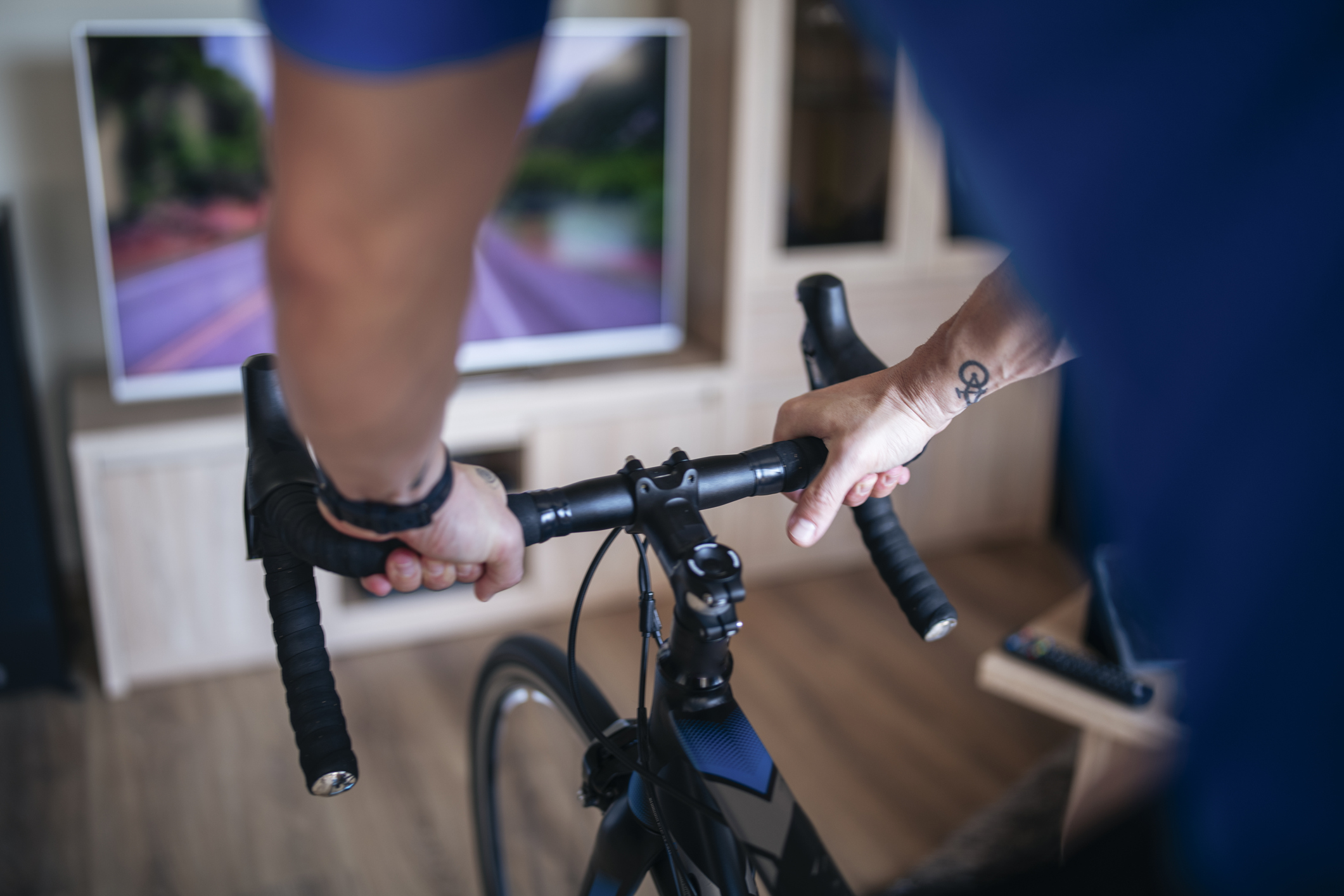
As I'm writing this it's the day after I finished the 2020 Rapha Festive 500 (apologies it's only being published now - Ed). This isn't the first year I've taken on this challenge and it won't be the last. For many people this year's event, like many things in 2020, will have been a little different though. Let's talk about how things went and what it takes to finish a challenge like this.
This was the third time I've taken on the Rapha Festive 500 but this was the first year it was official. The first time I tried the event was in 2018. Rapha has never recognized virtual miles in years past but I did it on a trainer anyway. My take on the spirit of the event is that it's about the hard work involved. There may have been an opportunity for a small token of completion from Rapha, for recognized miles, but was that the reason for doing it? Besides, if you could complete it in the warmer and sunnier climate of the Southern Hemisphere, why not on a trainer?
In 2018, completing 500km on a trainer garnered at least as much curiosity as outdoor riding would have. As with most things in 2020, the difference between this year and 2018 is a lifetime. Very few people spent much time on a trainer and smart trainers were much less prevalent. Even people I knew who had done it outside, in the rain and cold of the Pacific Northwest, didn't think the trainer was a possibility. For me the challenge was more about keeping my mind occupied than the physicality of it. I also made some pacing errors that I replicated in my 2019 attempt.
In 2019 sometime in late summer my cousin asked me if I'd like to take part in the Festive 500 with the crew of Rapha Seattle. I hate riding outside in the winter and I almost never ride at night. Taking on 500km, in one shot, in the Pacific Northwest winter means limited light and lots of rain. Honestly, the idea of it scared me. I'm not one to say no to a challenge though so I said yes and set about planning.
I'd ridden from Portland, Oregon, to Boise, Idaho, earlier that year. I wasn't worried about the miles but I was nervous about most everything else. We decided to ride 150 miles the first day then stay the night somewhere and ride the next 200 miles the second day. Like always, I was carrying the bare minimum I thought I needed when I showed up in Seattle the night before.
Around 4am the morning of the ride my cousin decided he wasn't ready to take on the ride. He probably made the right choice but I was already committed and decided to do it anyway. I showed up at the Seattle clubhouse without a teammate and headed out with a couple of others who were in similar situations. The first day I spent most of the time off the front riding at a pace that would have been tough at the height of my summer fitness. I was not at the height of my summer fitness. I also ate very little and by the time the sun was going down I was riding alone on unfamiliar roads.
Check out the Rapha Sleepless in Seattle video and you will see me around this time heading into a tunnel chasing a couple of other riders. I had fallen over attempting to get started on a small uphill and was at that moment pouring everything I had into making up time and grabbing a wheel. Having spent hours by myself imagining a lonely death on remote roads, I knew I had to find a wheel.
I followed the wheel I caught for an unknown amount of time. All I remember was an overly bright flashing rear light and heavy rain. I couldn't see much of anything as we rode along a section of highway in the dark. With nearly no shoulder and pouring rain I gave myself the job of turning the pedals and following that light. Riding at night is already a weird tunnel experience but the pouring rain and inability to feel my extremities only made it worse.
When we reached the town of Forks, the same one from the Twilight movies, I parted ways with that light. Soon after that I stood in a dollar store dripping and shivering uncontrollably while I figured out where I was staying. In the morning I opted not to ride the remaining 200 miles of roads I didn't know alone and in more rain. My cousin helped me figure out what to do and I rode back 60 miles then caught a bus to Seattle. That was a low point.
Among all the craziness of 2020 this year was the year that Rapha decided to recognize indoor miles. I already rode a lot of indoor miles but this year it's been even more. Any normal year I would have absolutely been back in Seattle attempting that ride again. Instead, I got to relive my failure via a video before getting on my trainer. There was one big difference though, I had company.
Since the beginning of the pandemic, I've spent 4 or 5 days a week with headphones connected to the Discord app. Someone I'd never known before this year is now my constant companion through thousands of virtual miles. It gets mentioned a lot in the Rapha video and I would be remiss not to mention it also, it's my team that got me through. With a friend in my ear the miles melted away.

Some say indoor miles are easy compared to outdoor miles in the elements. Only people who've never tried to ride serious miles indoors will say that. The challenge is just different. Instead of darkness and rain the challenge is that you can at any moment step off your bike. There's no rescue needed because you are already home. Just stop pedaling and go take a warm shower. Having that constant devil on your shoulder is one of the hardest things you'll ever have to contend with.
Still, even beyond the mental challenge there is a physical challenge to riding 500km between Christmas and the New Year. For me it was 532km in 15 hours over 6 days (plus a bonus ride New Year's Eve). I had tired legs and I was both cold and hot at the same time. In terms of strategy for getting through I did a couple of things better than ever before.

The first thing that was important was, as already mentioned, the team. Get someone solid who will be there with you. Get some good headphones, with a good mic, and get ready to chat away. Even better if you can find a couple of people. The next thing you have to do is pace yourself. The first year I did a couple of hard rides in the beginning then suffered after that. The second year I spent a day riding harder than I should have. This year I rode at an easy 60% of FTP and just turned the pedals.
There are also some products that will make things a little more pleasant.
Here’s my pick of the best products for long distance indoor riding.
When you plan to spend a lot of hours pedaling across a virtual landscape these are some items that will help get you through the ride.
With each product is a ‘Buy Now’ or ‘Best Deal’ link. If you click on this then we may receive a small amount of money from the retailer when you purchase the item. This doesn’t affect the amount you pay.
Huawei FreeBuds 3
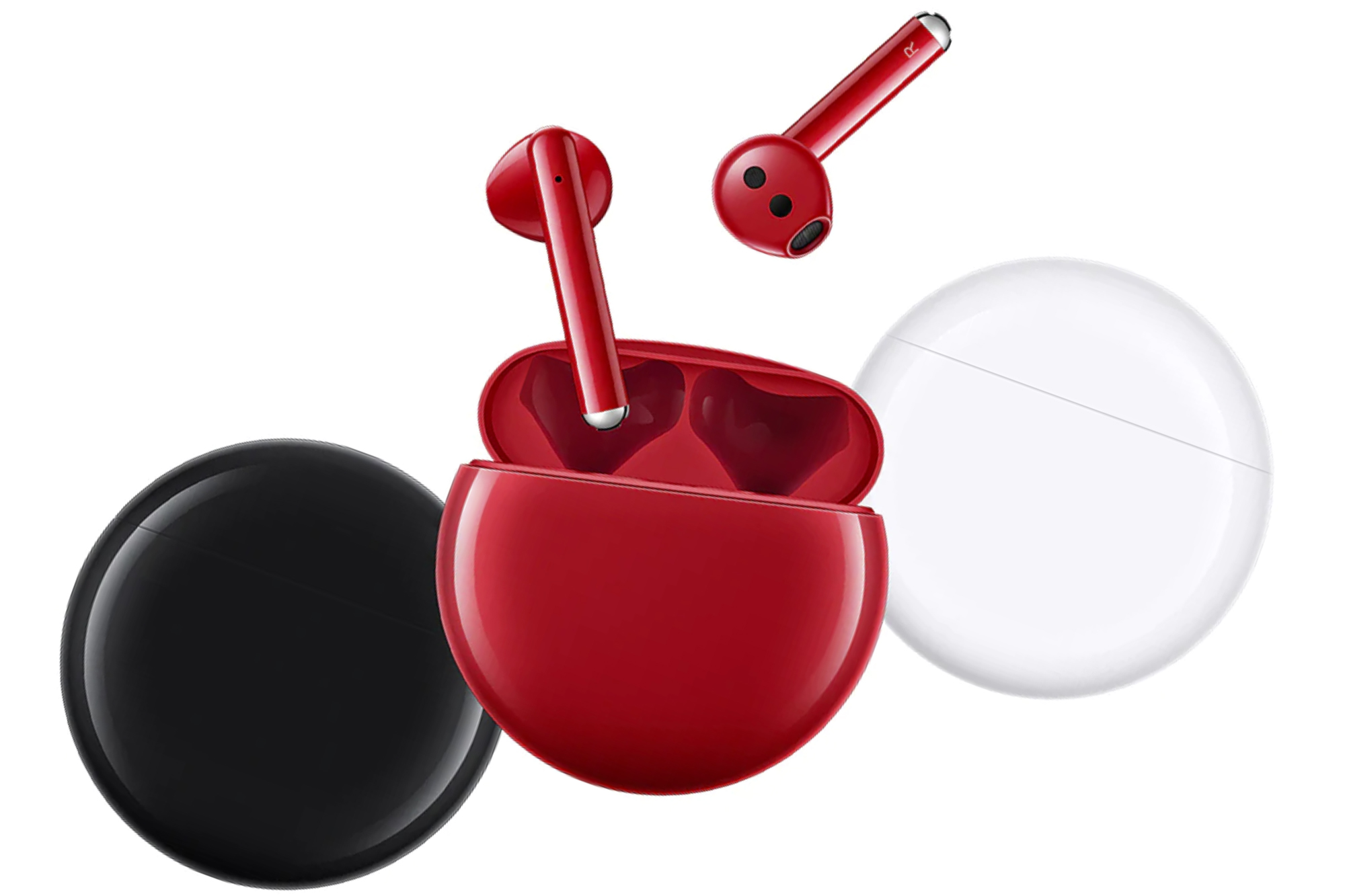
- RRP: $119.99
- Colorways: black, red, white
- Pros: excellent mic, either ear works separately
- Cons: no sound isolation
Riding with a fan pointed at your face while the noise of a trainer and the drivetrain drones on in the background is a challenge for an audio mic. Actually, that's an understatement, it's basically a torture test. The Huawei FreeBuds 3 consistently do better than any of the other top true wireless earbuds I've tried. Using bone conduction technology means the people on the other end of the call can hear me clearly. Despite all the background noise I'm clear to them and they are clear to me. It's also a plus that I haven't managed to destroy them with sweat over the last year or so.
Official battery life is 4 hours. I haven't clocked it exactly but that's about right. There's more to the story though. Each earbud will work independently of the other. Each earbud also tends to die at different times. That means as one battery gets low, I can put it into the case to charge then swap.
Buy now:Huawei Freebuds 3 at Amazon for $119.99
Saris H3 Direct Drive Trainer
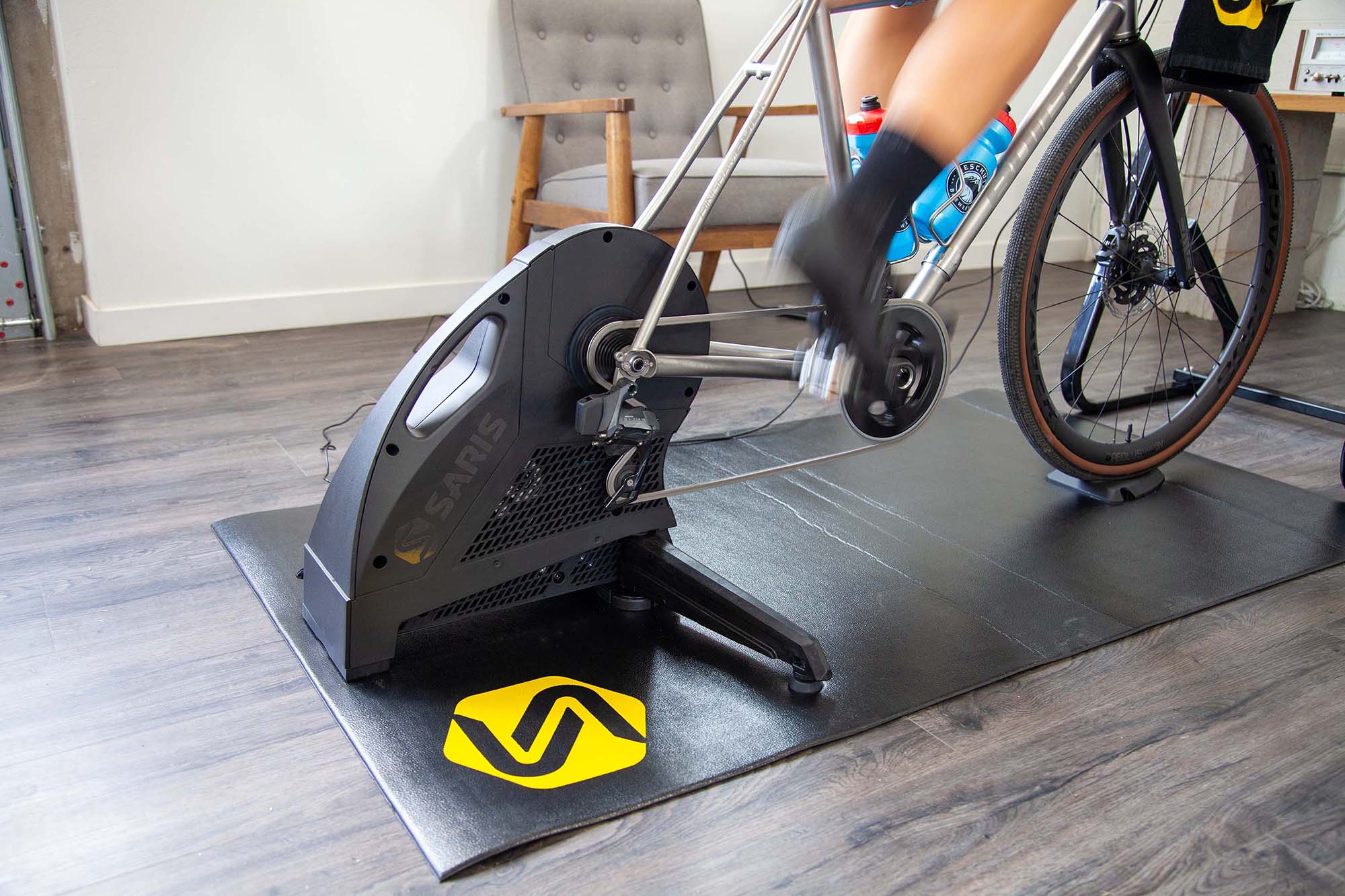
- RRP: $999.99
- Pros: A good quality app with easy ERG mode
- Cons: Only one available bluetooth connection
The Saris H3 Direct Drive trainer is among the best direct drive trainers. Previous Saris trainers were a bit loud but the H3 is five times quieter than previous generations. The actual spec is 59 decibels at 20 mph and that ends up being indistinguishable from the noise of the drivetrain. Aside from the noise there's also resistance up to 2000w or a simulated 20% slope and power that's accurate to +/-2%. Cadence measurement does not require any external sensor. These standard features come along with a great price.
If, like me, you have trouble with pacing, look to the Saris companion app for a great training feature. That feature is ERG mode. Cover the miles in Zwift but unpair the controllable trainer. Open the Saris app and choose ERG mode. Set your desired power and train at exactly the intensity you need to hold. It's easy and it's guaranteed to keep you consistent.
Buy now:Saris H3 Direct Drive Smart Bike Trainer at Amazon for $999.99
Saris TD1 Bike Trainer Desk
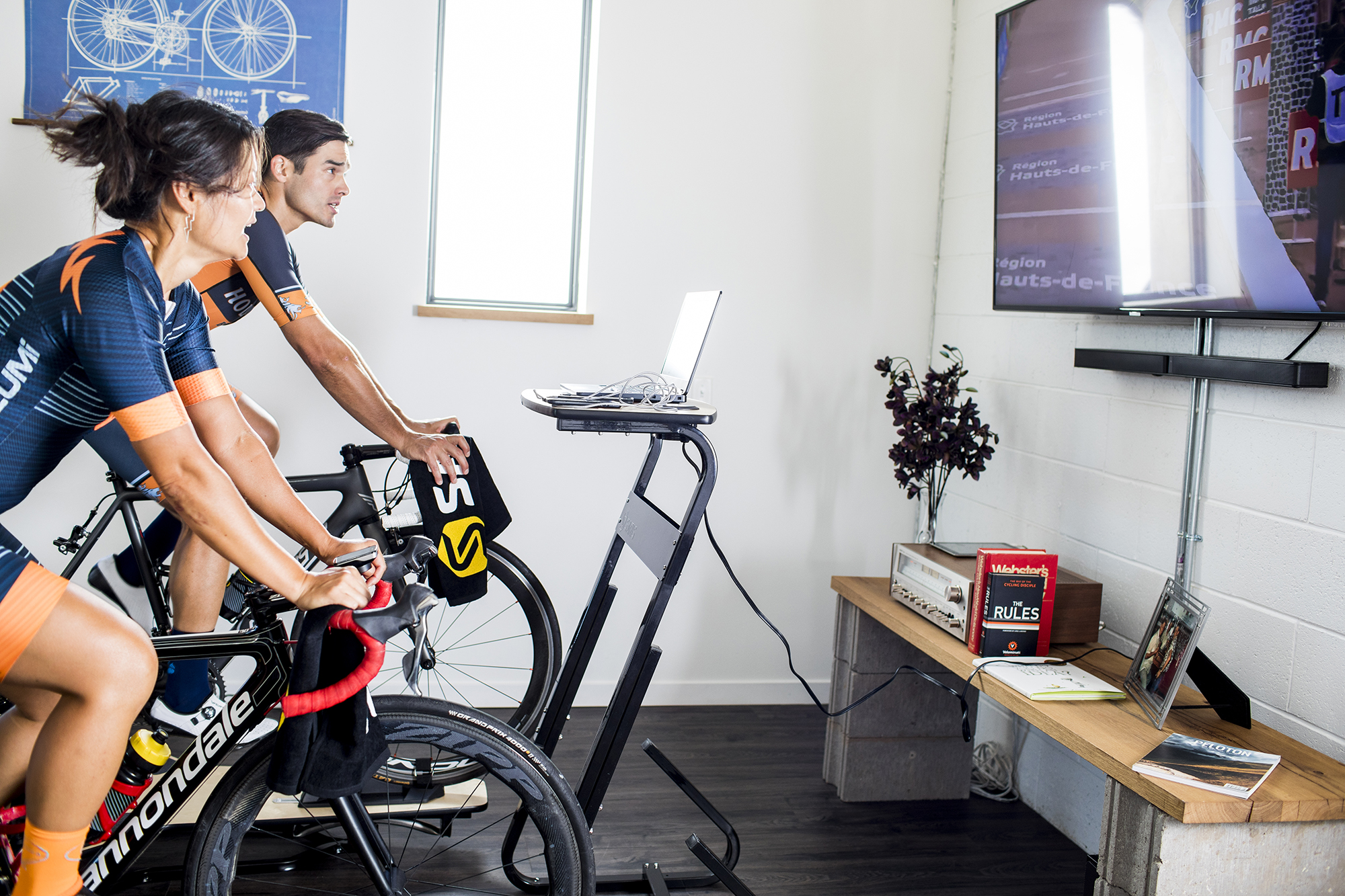
- RRP: $329.99
- Pros: Perfect fit over your front wheel, solid construction, USB charging ports
- Cons: expensive
Finding just the right solution for positioning your computer, or tablet, for a long ride could be a challenge. You can use a desk in some situations but if you need to squeeze into a tight area that might not work. The Saris TD1 trainer desk takes up a minimal amount of space while providing lots of thoughtful features. The build quality Saris provides is incredible. All of the components are solid and well built.
The height is adjustable for your needs but when positioned high up in the range there's enough space to squeeze a fan and part of the front wheel under it. It makes it possible to reach a computer while riding as well as take advantage of the integrated outlets.
Buy now:Saris TD1 Bike Trainer Desk at Amazon for $329.99
TacX Sweat Cover
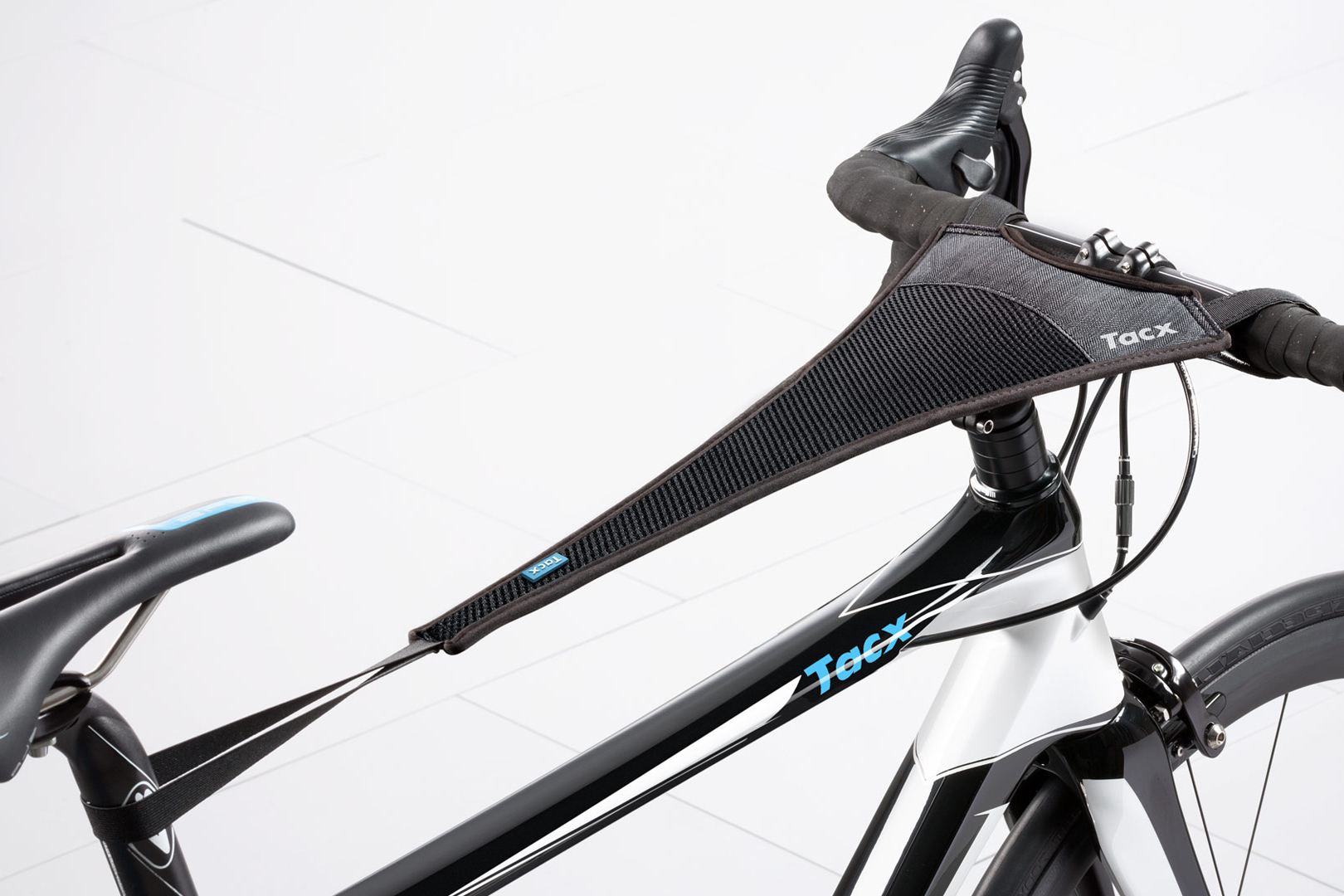
- RRP: $19.99
- Colorways: black
- Pros: inexpensive, highly absorbent
- Cons: could cover slightly farther forward
The amount of sweat that comes off of your body during indoor training is downright unbelievable. After a long session expect everything around near you to be completely drenched. No problem for clothes that need a quick wash but human sweat is corrosive and your bike needs protection.
Just a single season is more than enough to absolutely destroy your bike. Anything metal is subject to corrosion and even the finish on the frame will start to come off. throw a towel over the front wheel and brake but for the frame and headset the Tacx Sweat Cover is a must have. It's inexpensive and will save your bike. Just make sure you take it off so it can dry without touching the bike.
Buy now:TacX Sweat Cover at Competitive Cyclist for $19.99
Kinetic Trainer Mat
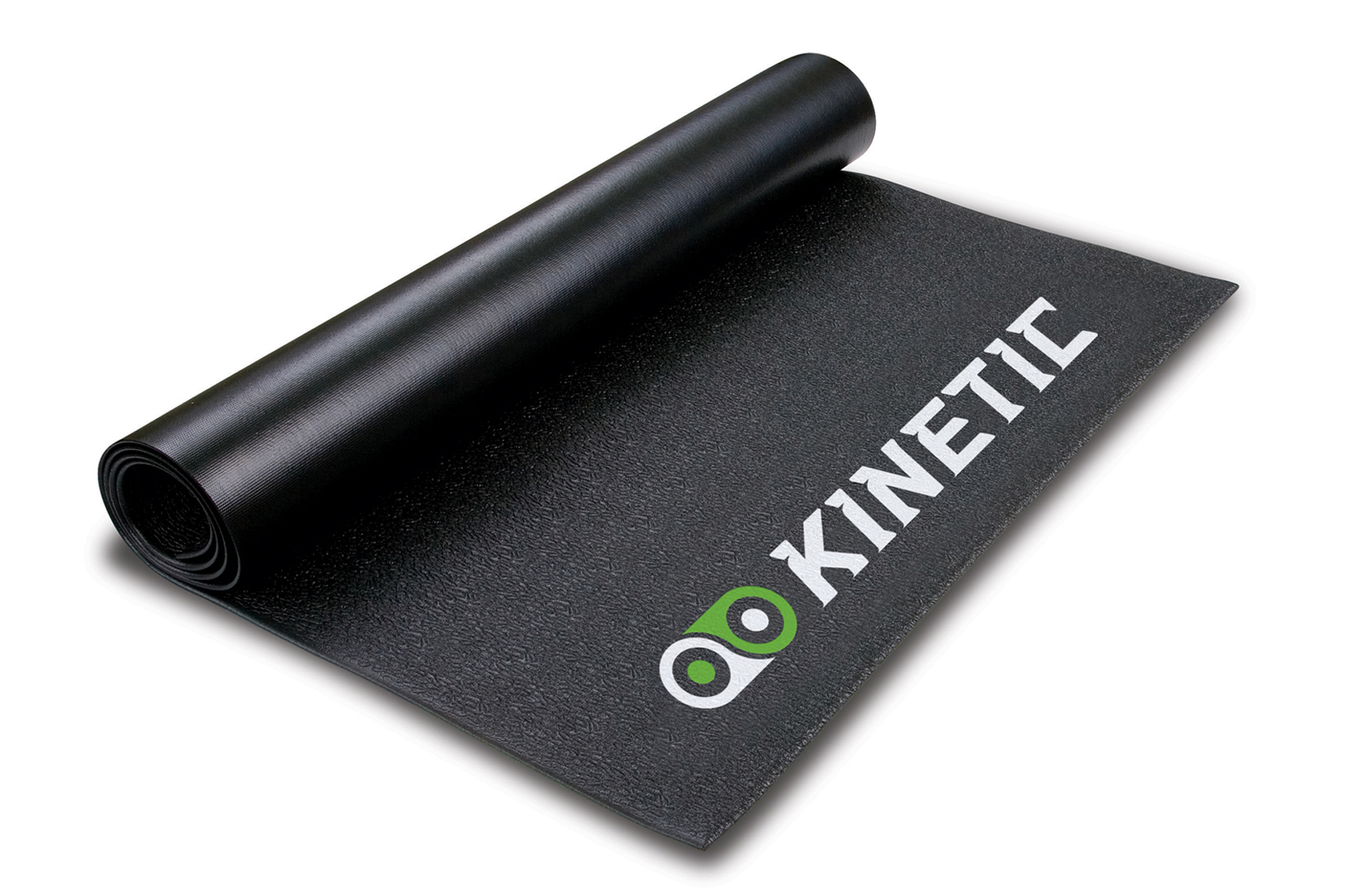
- RRP: $69.00
- Colorways: black
- Pros: inexpensive
- Cons: long length can sometimes be a challenge
Just like your bike needs protection so does your floor. Wood floors, or carpet, have an obvious need for protection but even the cement floor in a garage is worth covering. There might not be damage to a cement floor but it is difficult to clean. A good trainer mat makes it easy to clean up the puddles you should expect to see forming on either side of your bike.
Another advantage of a trainer mat is noise reduction. The dense foam that a trainer mat uses will reduce vibration caused by the trainer against a hard floor. Even slight annoyances can become a big deal after hours of hard work on an indoor trainer.
Buy now:Kinetic Trainer Mat at Amazon for $69.00
Vornado 7803 Large Pedestal Fan
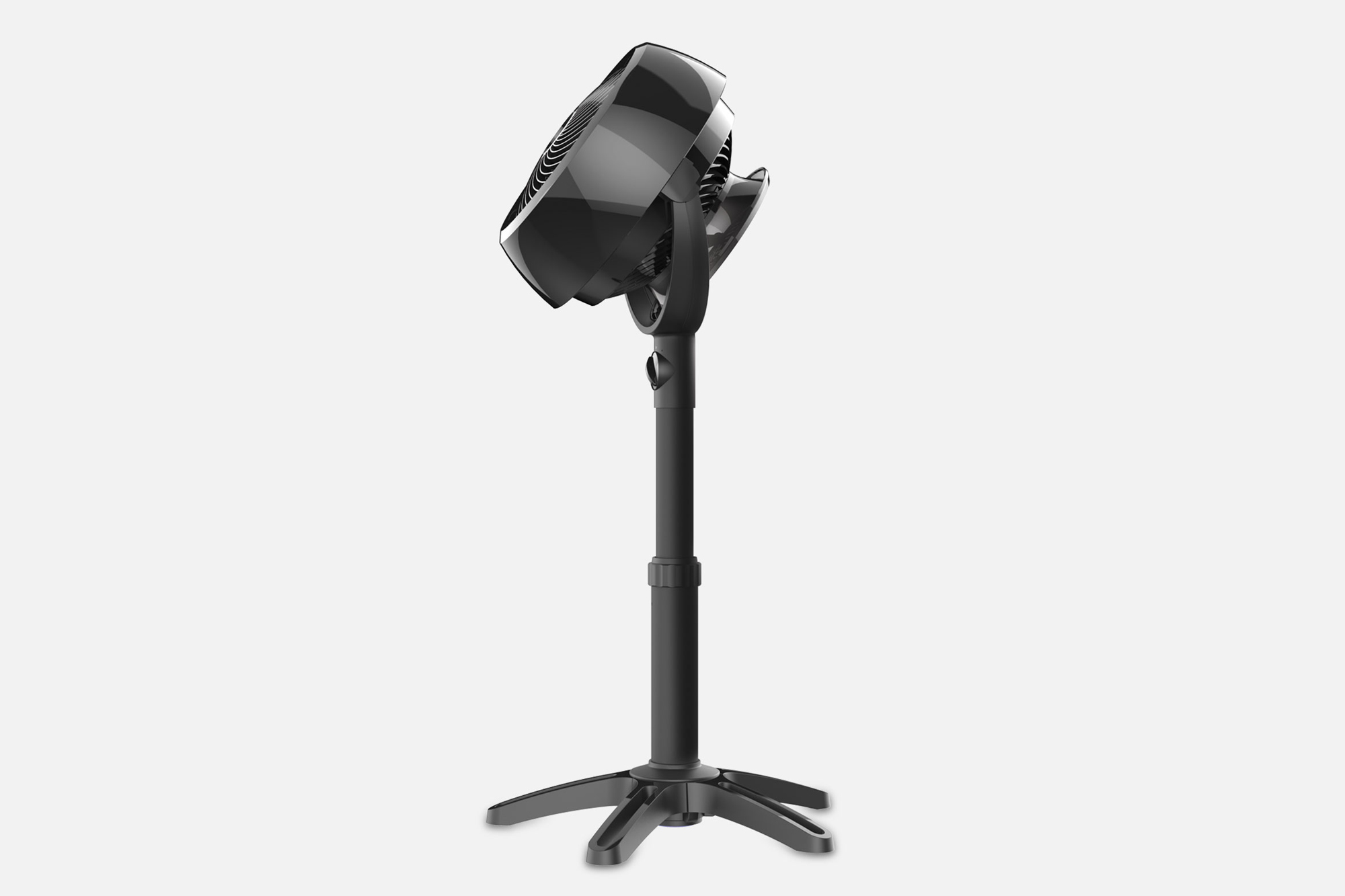
- RRP: $139.99
- Colorways: black
- Pros: Lots of airflow, small footprint
- Cons: Max height is low in some situations
There's no way you can perform your best without airflow. When you ride outside airflow isn't an issue but indoors it can be the difference between finishing or not. The Vornado 7803 pedestal fan is a small enough package that it can fit right in front of the bikes front wheel. It will squeeze under a desk and the directed quality of the air flow makes aiming at your face easy. Once you get it aimed there's also a massive amount of available airflow. Low is 69 CFM while high speed is a face melting 721 CFM without being overly loud.
Having only three available speeds is actually a benefit for use with indoor cycling. When you need to go up a speed there's no fumbling with a bunch of options. Quickly reach forward over the bars and flip the switch through the distinctive clicks. The 5 year warranty is a nice bonus too although I've had no reason to take advantage of it.
Buy now:Vornado 7803 Large Pedestal fan at Amazon for $128.14
Castelli Insider Jersey
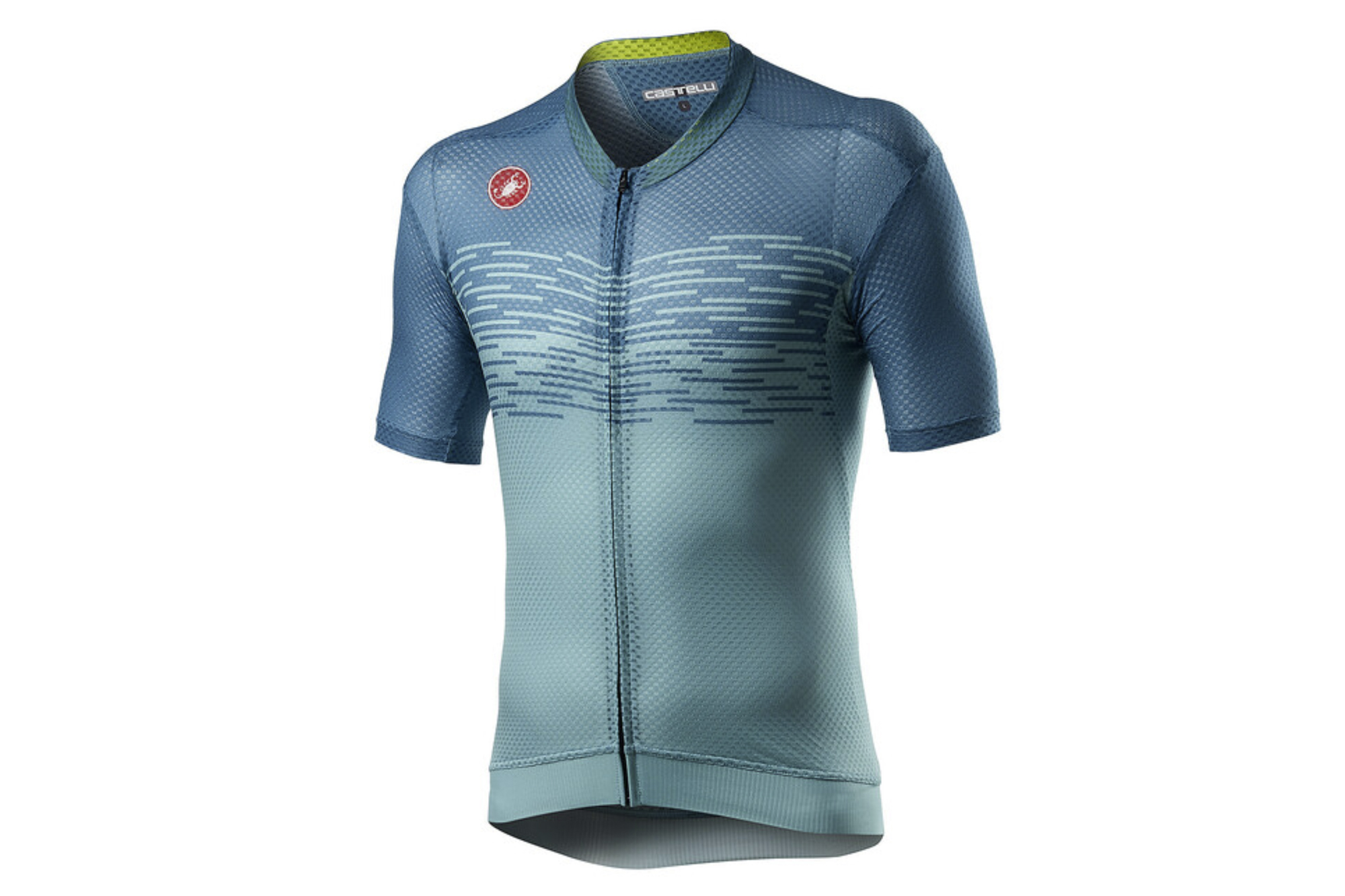
- RRP: $119.99
- Colorways: celeste, light black
- Sizes: XS, S, M, L, XL, XXL, 3XL
- Pros: great fit, plenty of ventilation
- Cons: delicate
When you think about cycling jerseys it's easy to get caught up in the performance and technical aspects. Before getting into the details, it's important to remember that a jersey is a piece of clothing. It has to look good and it has to feel good and the Castelli Insider hits high marks in that regard. If a Castelli fit works for you then there's not going to be any surprises here. There's a nice slim profile that is a joy to wear.
Get past that and there are a number of indoor specific features that make the Insider jersey worth picking up. Without the airflow found outside it's easy to overheat. To address this, the Castelli Insider is the lightest jersey I've ever used. It's good for keeping you cool while riding but it also means it will dry quickly if you need to wear it day after day. Paired with the excellent fabric is a wide and sticky waist that absolutely will not ride up. Out back there are a pair of pockets that work well for carrying a phone and headphones as you come and go from the trainer.
Read More: Our review of the Castelli Insider Jersey
Buy now:Castelli Insider Jersey at Competitive Cyclist for $119.99
Castelli Core Mesh 3 Sleeveless Baselayer
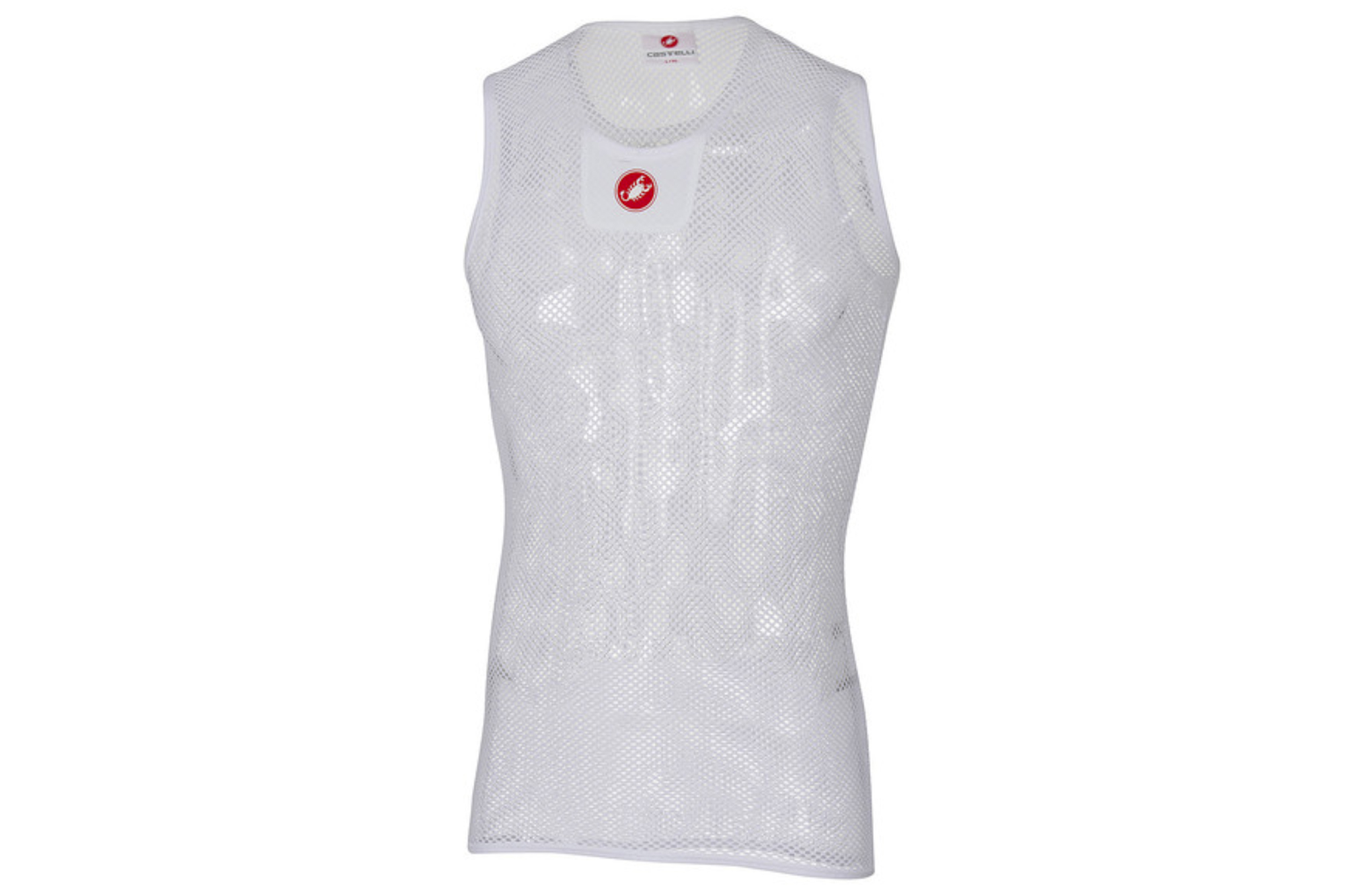
- RRP: $49.99
- Colorways: white
- Sizes: S/M, L/X, XXL
- Pros: Ultralight
- Cons: rough
I always recommend wearing a base layer. A quality cycling kit is like a fine suit. Just like an undershirt helps everything fit best with a good suit, a quality base layer helps keep your cycling kit looking, and feeling, it's best. The Castelli Core Mesh 3 is different from most other cycling base layers though.
The compressive nature is still there but instead of being an underlayer the Core Mesh 3 is so light it's more like a spacer. Wide spacing in the mesh means that the functional result is a buffer of air between your skin and your cycling jersey. This air space allows for additional circulation and even faster evaporation. The Castelli Core Mesh 3 is great for the hottest summer rides as well as the low airflow that comes with indoor riding.
Buy now:Castelli Insider Jersey at Competitive Cyclist for $119.99
Mavic Allroad Bib Shorts
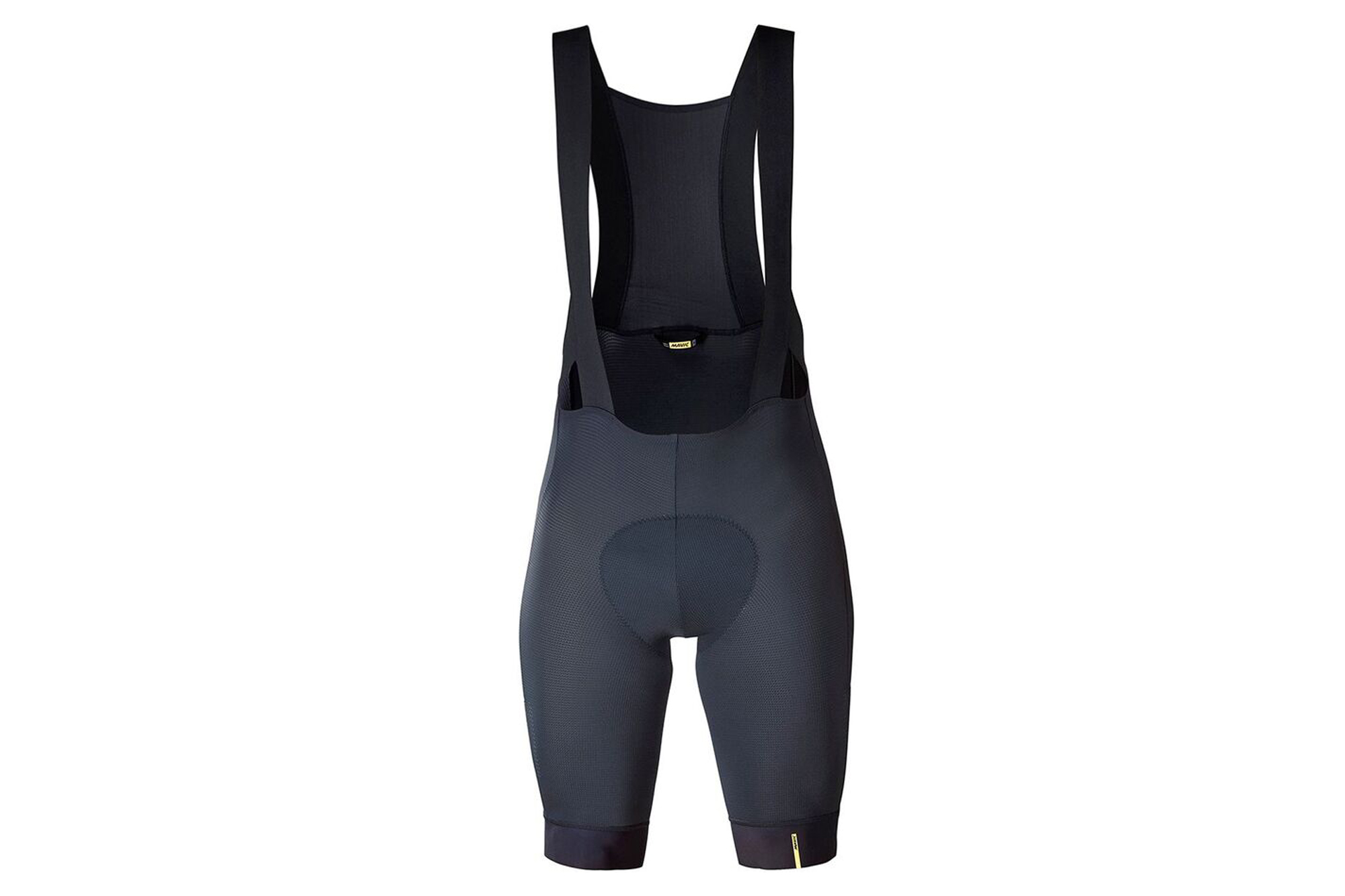
- RRP: $176.00
- Colorways: Total Eclipse (dark blue)
- Sizes: S, M, L, 2XL, XX
- Pros: lots of compression, thick chamois, pockets
- Cons: heavy
The Mavic Allroad bib shorts fall into the loosely defined gravel cycling focused clothing category. It's a somewhat thick fabric compared to lots of other bib shorts on the market and it's not what most people imagine for indoor cycling. There's actually a bit of overlap in the needs of gravel cyclists and indoor cyclists though.
The gravel cycling design of the Mavic Allroad bibshort means solutions meant for upright riding over rough surfaces. There's a thick, dense, chamois and it works just as well indoors. You might not be as upright, and the ride isn't bumpy, but when you stay locked into the same position for hours on end the features are welcome. Other gravel focused features like cargo pockets and lots of compression are also welcome as the indoor hours drag on.
These aren't the lightest weight option available but the other features on offer have made them my go to for indoor riding.
Buy now:Mavic Allroad bibshort at Jenson USA for $132.00
Shimano IC1 Indoor Cycling Shoes
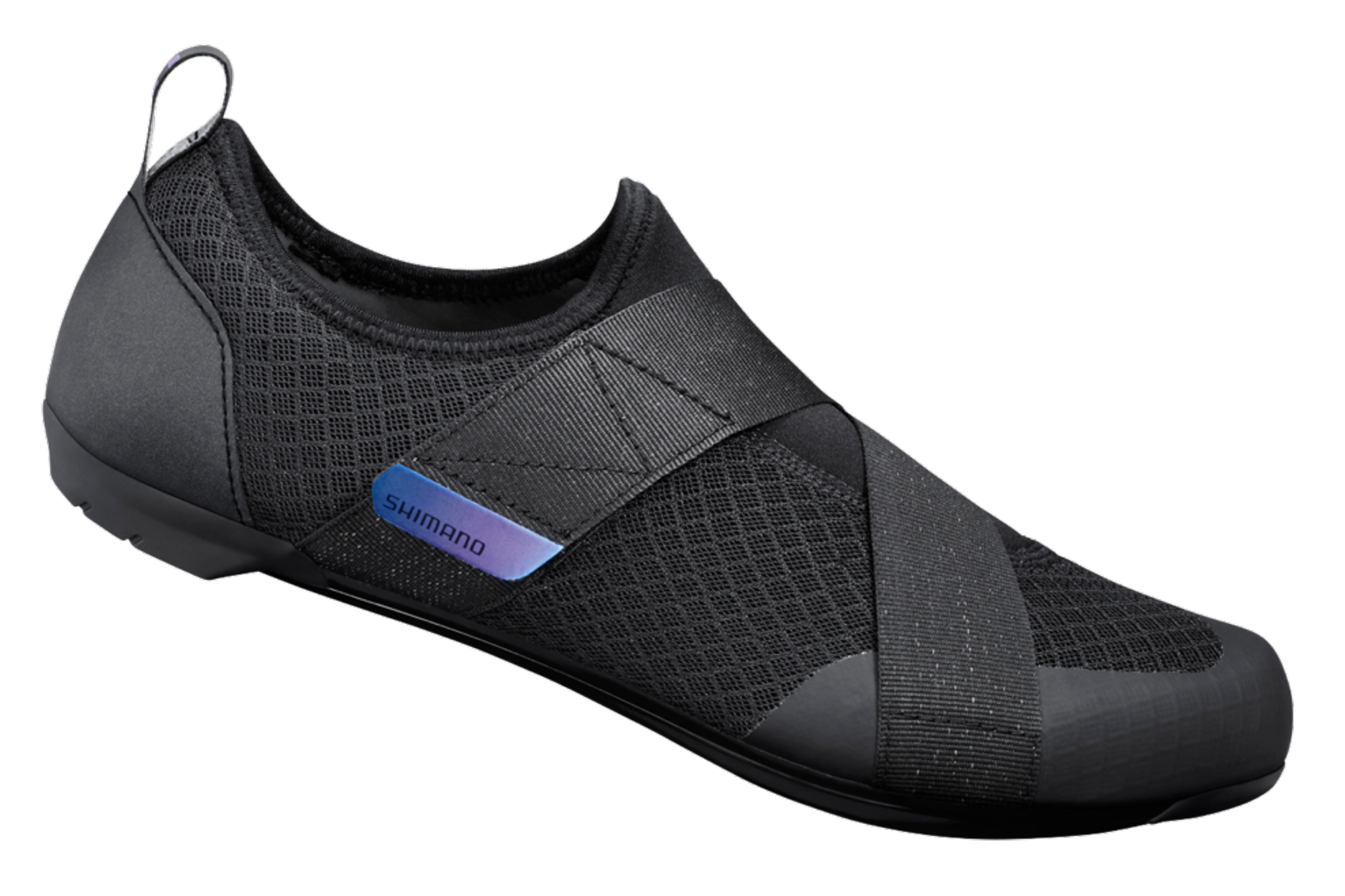
- RRP: $90.00
- Colorways: Black
- Sizes: 42-50
- Pros: 2 bolt or 3 bolt pedal compatibility, walkable
- Cons: not adjustable at different places on the foot
Your favorite summer cycling shoes are a great option for indoor cycling. It's what everyone has always used. Shimano just introduced something different though. With the IC1 Shimano looked at the experience of indoor cycling and solved problems no one else even considered.
The Shimano IC1 is light and breathable, like many summer cycling shoes but it's the indoor features that make them special. The design is fast to slip on so that when you are rushing to be on the starting line for a Zwift race there's no lost time struggling with shoes. They are also stable and walkable for those times when you find yourself running across the house to grab something you forgot. On top of that they are pretty inexpensive, in the realm of cycling shoes, and they work with both 2 bolt or 3 bolt pedals for extra flexibility.
Buy now:Shimano IC1 Indoor Cycling Shoes at Shimano Indoor for $90.00
Smartwool PhD Run Cold Weather
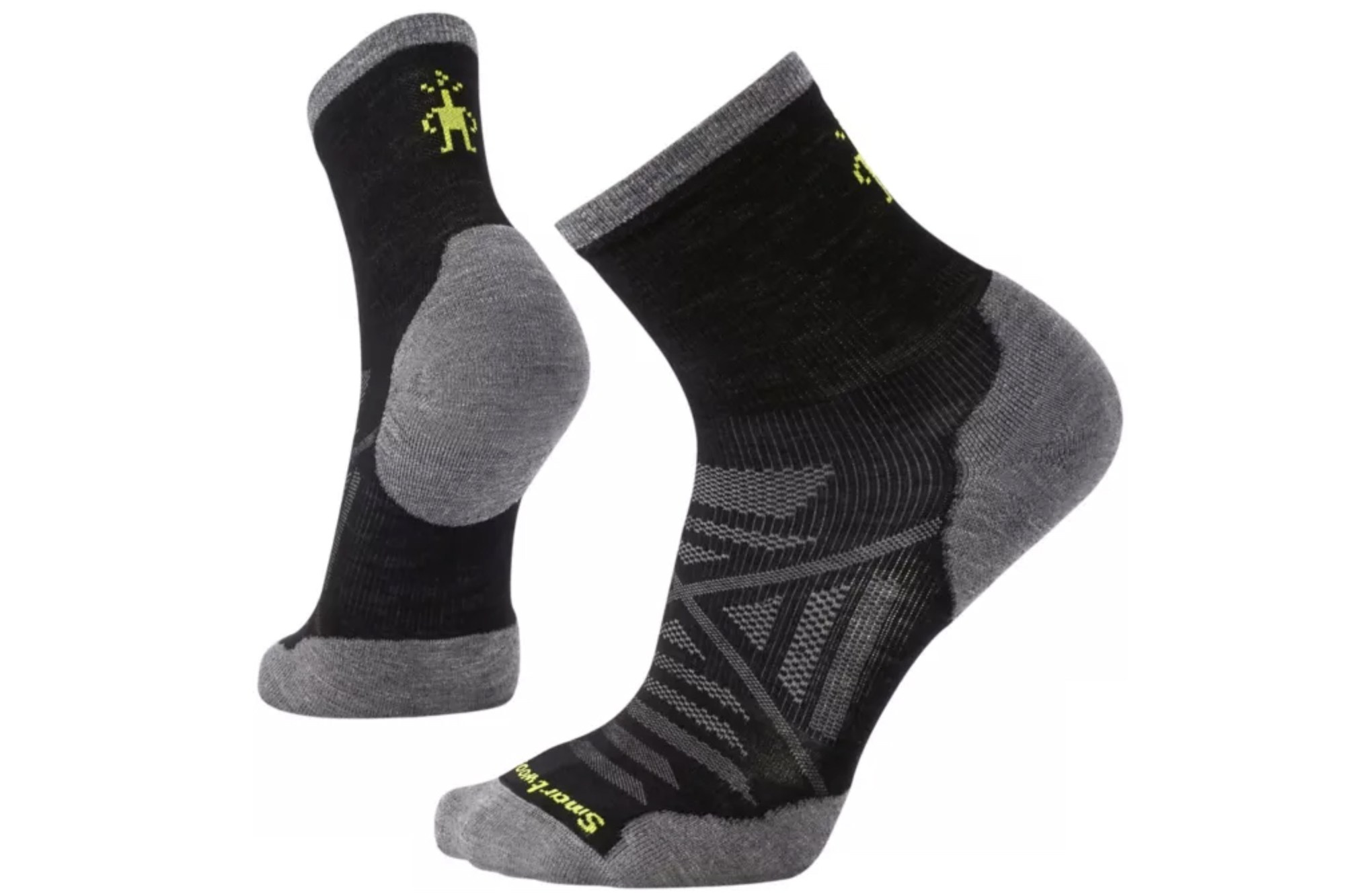
- RRP: $21.95
- Colorways: Black, Neptune Blue
- Sizes: M, L, XL
- Pros: good at handling changing temperatures
- Cons: short for a cycling sock
One of the challenges for riding indoors for me is temperature regulation. The room I ride in is drafty and unheated. At the beginning of the ride, it's cold. As my body heats up the temperature doesn't change but the lack of airflow inherent with indoor riding means I get plenty warm. Sometimes I use a light jacket at the start and take it off midway. Socks aren't an easy mid-ride change and something that can keep my toes warm but not overheat my feet is an important consideration. The Smartwool PhD Run Cold Weather is a good choice for indoor riding in a cold room. They keep my toes warm in the cold without being overly bulky or hot.
Buy now:Smartwool PhD Run Cold Weather at Backcountry.com for $21.95
Gu Energy Gels
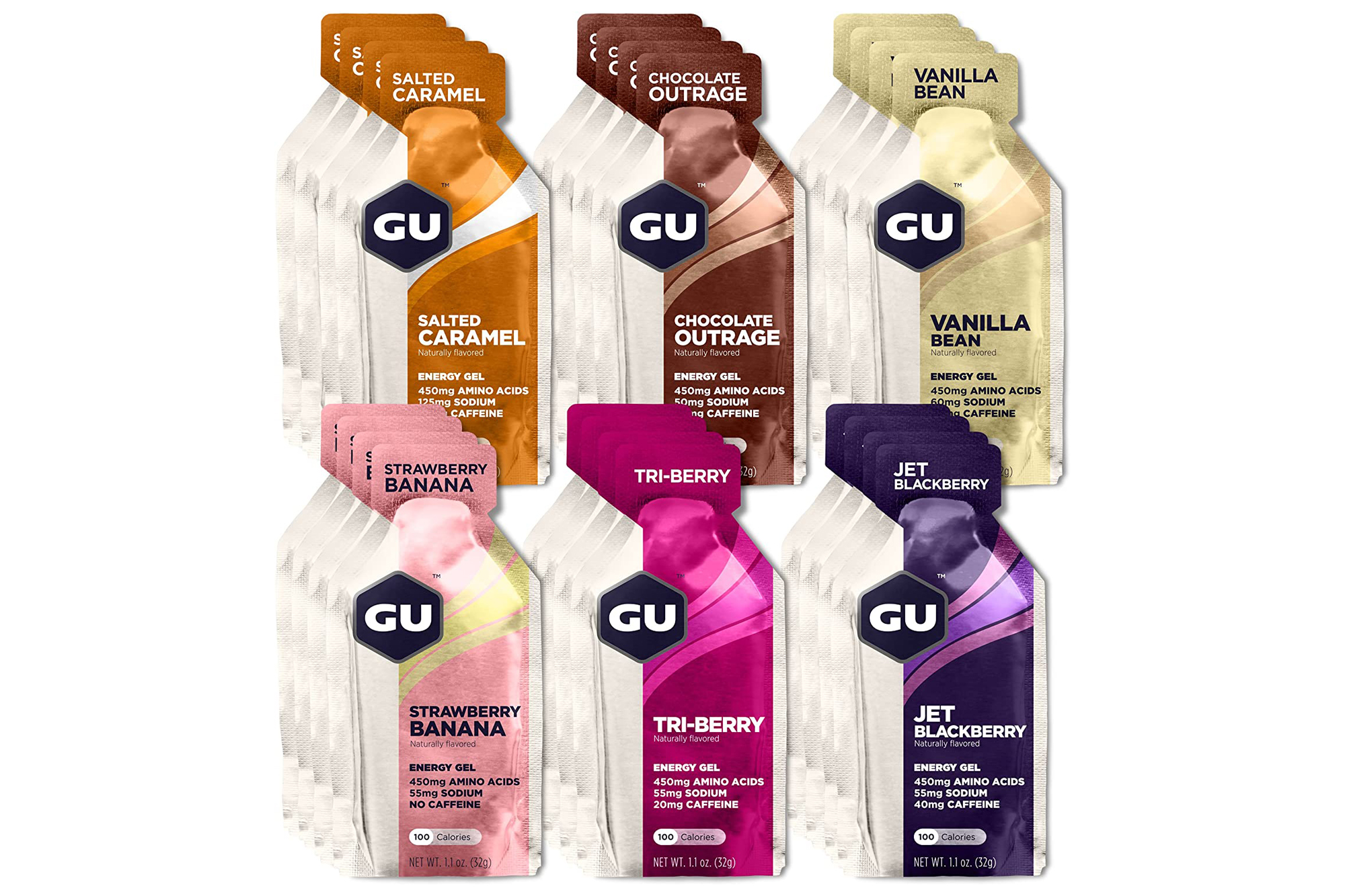
- RRP: $36 for 24
- Flavors: 30 different options
- Pros: easy to consume, tastes great
- Cons: difficult to open while riding
Nutrition is hard enough any time you are on the bike. The balance between eating too much and eating too little is delicate but for indoor riding it's often forgotten. Riding indoors is traditionally so short as to not need specific nutrition consideration. When you start going for longer distances it's easy to forget to add nutrition into the mix. Make a mistake though and it's more likely to derail your riding. Instead of riding with low energy with the chance of recovery you might just step off the bike.
When I think of nutrition it's always GU Energy gels. They have carried me across states and been a companion on every hard ride I've ever done. They are easy to carry and they taste great. For indoor rides at endurance pace one gel an hour works well for me. Up the pace and you'll need more.
Buy now:GU Energy Original Energy Gel, 24-Count at Amazon for $32.97

Thank you for reading 20 articles this month* Join now for unlimited access
Enjoy your first month for just £1 / $1 / €1
*Read 5 free articles per month without a subscription

Join now for unlimited access
Try first month for just £1 / $1 / €1
Get The Leadout Newsletter
The latest race content, interviews, features, reviews and expert buying guides, direct to your inbox!
Josh hails from the Pacific Northwest of the United States but would prefer riding through the desert than the rain. He will happily talk for hours about the minutia of cycling tech but also has an understanding that most people just want things to work. He is a road cyclist at heart and doesn't care much if those roads are paved, dirt, or digital. Although he rarely races, if you ask him to ride from sunrise to sunset the answer will be yes.
Height: 5'9" Weight: 137 lb.
Rides: Orbea Orca Aero, Cannondale Topstone Lefty, Cannondale CAAD9, Trek Checkpoint, Priority Continuum Onyx
-
 A bike rack with an app? Wahoo’s latest, and a hub silencer – Sea Otter Classic tech highlights, Part 2
A bike rack with an app? Wahoo’s latest, and a hub silencer – Sea Otter Classic tech highlights, Part 2A few standout pieces of gear from North America's biggest bike gathering
By Anne-Marije Rook
-
 Cycling's riders need more protection from mindless 'fans' at races to avoid another Mathieu van der Poel Paris-Roubaix bottle incident
Cycling's riders need more protection from mindless 'fans' at races to avoid another Mathieu van der Poel Paris-Roubaix bottle incidentCycling's authorities must do everything within their power to prevent spectators from assaulting riders
By Tom Thewlis